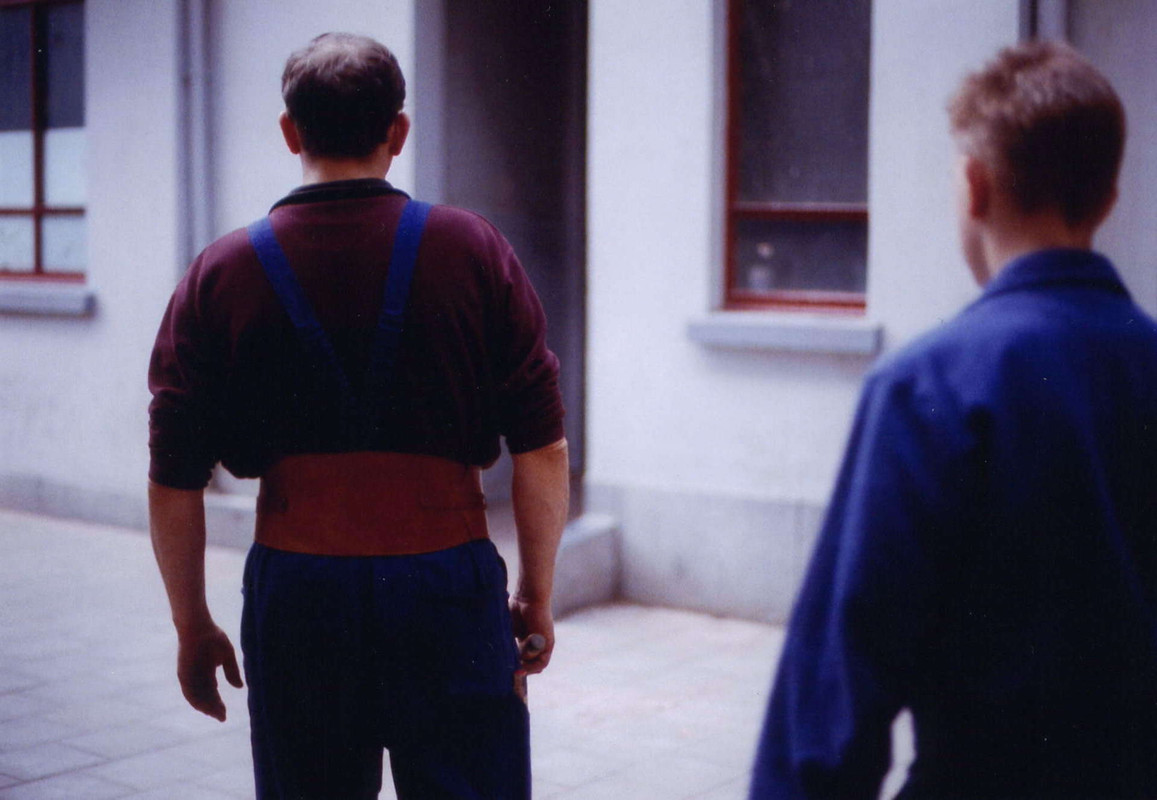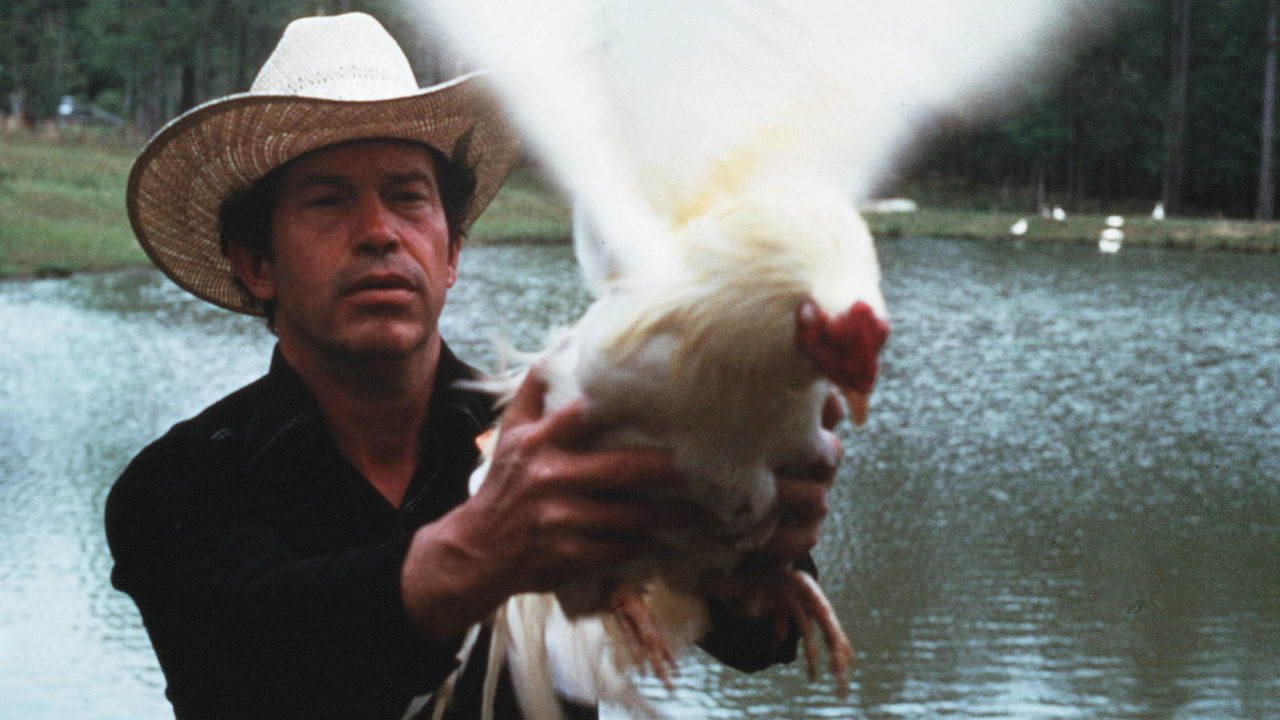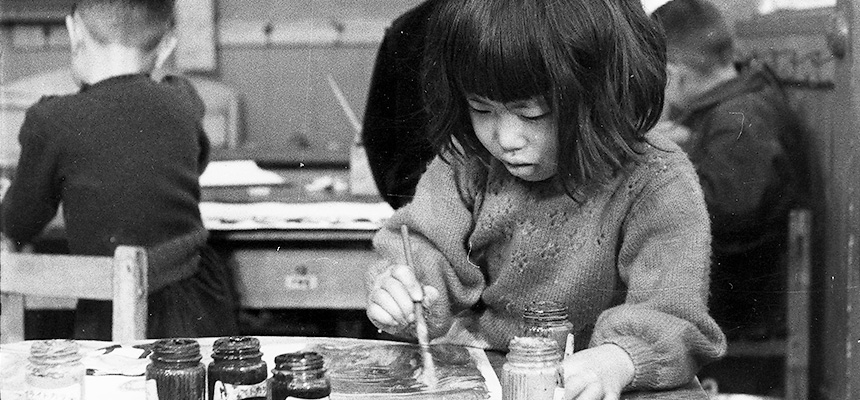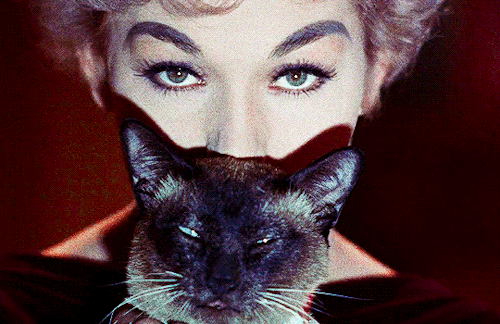“With these shots from the back and the neck, we hope to confront the spectator with a mystery, the impossibility of knowing and seeing. The face and the eyes should not try to express a situation that already sufficiently stirs up the spectator’s interests. This expression would direct, limit or even prevent expectations, whereas the back and the neck allow the spectator to go deeper, like a car driving into the night.”Le fils [The Son] (Jean-Pierre Dardenne + Luc Dardenne, 2002)
Mar
15
Idus Martiae

Olivier (Olivier Gourmet) and Francis (Morgan Marinne) both seen from the back, with the pupil following the teacher. DP: Alain Marcoen.
For Idus Martiae, the Ides of March, a scene showing the main character's back.
Olivier, a carpentry teacher at a youth rehabilitation center, has a new apprentice, 16 year old Francis. Fascinated by the boy and his unspoken backstory, he starts following him around.
– Luc Dardenne, via [spoilers]
“The Dardennes' brothers’ camera follows Olivier in his enigmatic, ominous obsession with the boy and almost constantly films him up close and from behind. In the absence of a true gaze, the back turns into a face that speaks but doesn’t explain anything, “a body that becomes a vibrating membrane”, as Jean-Pierre Dardenne so beautifully put it.” (via)
Cockfighter (Monte Hellman, 1974)
Mar
15

Frank Mansfield (Warren Oates) holding up a reluctant, wildly flapping white rooster. DP: Néstor Almendros.
“I cast my hat out into the universe, let it greet those who are on their way from Earth. From this day forward, the Moon is no longer a dream.”Baron Prášil [The Fabulous Baron Munchausen] (Karel Zeman, 1962)
Mar
14
Under the Skin – 2013

The Baron (Miloš Kopecký) on the Moon clinks glasses with Cyrano de Bergerac (Karel Höger) and several characters from Jules Verne's De la terre à la lune (1865). A baffled 20th century astronaut looks on. DP: Jiří Tarantík.
A weird of quirky sci-fi film on the date Under the Skin (2013) was released in the UK.
– Cyrano de Bergerac
絵を描く子どもたち [E o kaku kodomotachi: jidōga o rikai suru tame ni / Children Who Draw] (Susumu Hani, 1956)
Mar
13
Youth Art Month

A little girl painting. DP: Shizuo Komura.
An artistic child for Youth Art Month (USA)
Small children work with clay, paint, and other materials. Under the camera's watchful eye, we see their work come to life.
Нощта срещу тринадесети [Noshtta sreshtu 13-i / On the Eve of the 13th] (Anton Marinovich, 1961)
Mar
13

Three men packed in a car. It's night and it's raining. DP: Trendafil Zahariev.
Die große Ekstase des Bildschnitzers Steiner [The Great Ecstasy of Woodcarver Steiner] (Werner Herzog, 1974)
Mar
13

Walter Steiner, flying. DP: Jörg Schmidt-Reitwein.
“You're a foreigner and you're lost.”L'immortelle (Alain Robbe-Grillet, 1963)
Mar
12
National Hitchcock Day

A woman in silhouette (Françoise Brion) enters a building. The setup is perfectly symmetrical except a beam of light passing through the opened doors that highlight's the woman's presence, adding a sense of wrong to the scene. DP: Maurice Barry.
A favourite non-Hitchcock mystery for National Hitchcock Day (USA)
“Three days ago, at exactly 0600 – because that is really not the time – on February 5 – because that is really not the date – this freighter, which shall be nameless, sailed from a certain Far Eastern port. Its destination: The Port of Los Angeles, Wilmington, California. This is fact.”Hell Bound (William J. Hole Jr., 1957)
Mar
12
Saturday

A man writes a name in the 9:30 a.m. time slot of the calendar page for Saturday March 21. DP: Carl E. Guthrie.
– narrator
“I sit in the subway sometimes, on buses, or the movies, and I look at the people next to me and I think… 'What would you say if I told you I was a witch?'”Bell Book and Candle (Richard Quine, 1958)
Mar
12

Gillian Holroyd (Kim Novak) and her Siamese, Pyewacket. DP: James Wong Howe.
– Queenie
L'homme à la valise [The Man with the Suitcase] (Chantal Akerman, 1983)
Mar
11
close quarters

Henri (Jeffrey Kime) and the woman (Chantal Akerman) at a claustrophobically small table, each eating their breakfast. The woman has a baguette, a bowl of coffee, and a cigarette. Henri takes up most of the table with a serving tray holding a whole box of Pelletier toast, a plastic milk bottle, and a coffee pot. He's also manspreading. DP: Maurice Perrimond.
Close quarters: US premiere of 10 Cloverfield Lane (2016).
A filmmaker (Akerman) reluctantly hosts a guest (the always imposing Jeffrey Kime) in her already cramped quarters. His increasingly expanding presence in volume, sight and sound are insufferable for the quiet cineast.